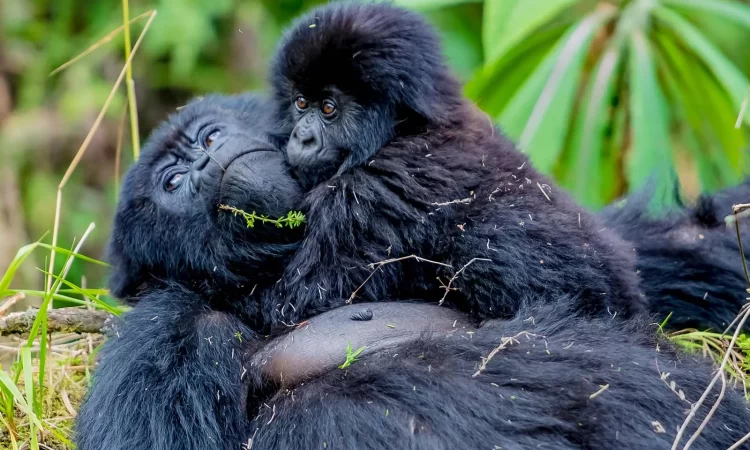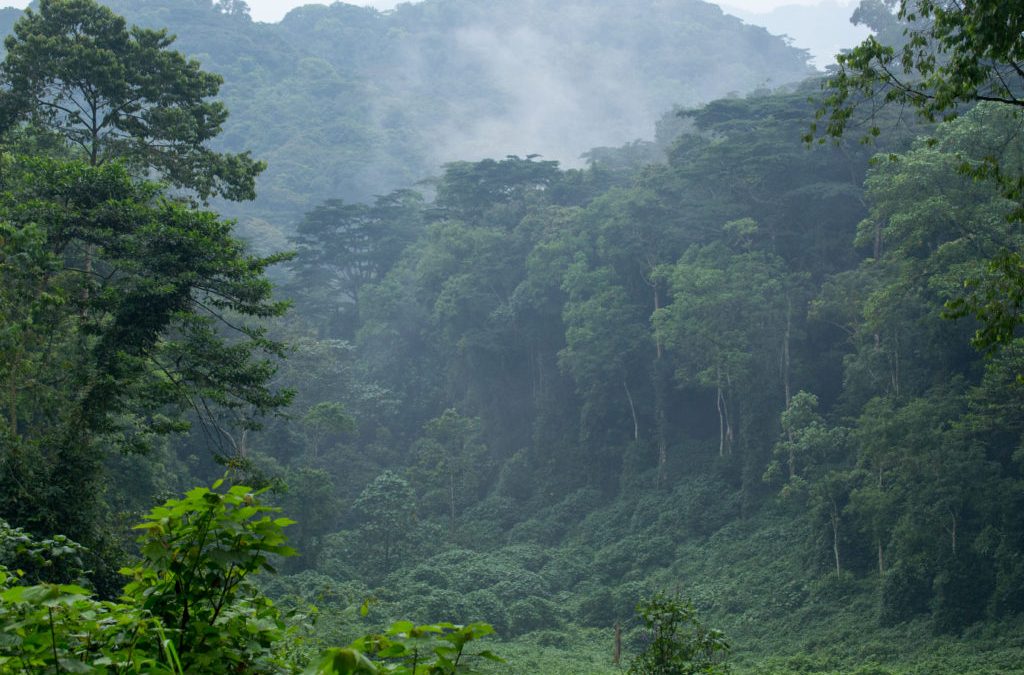What happens when it rains during gorilla trekking?
What happens when it rains during gorilla trekking, Trekking to observe mountain gorillas in their natural habitat is one of Africa’s unique wildlife safari experiences that numerous people aspire to undertake before retirement. Mountain gorilla trekking occurs in three primary countries in East Africa: Uganda, Rwanda, and the Democratic Republic of Congo. Despite the considerable expectation and enthusiasm around it, mountain gorilla trekking is a costly endeavor in Africa. Due to its high cost, numerous visitors prefer to partake in it during the optimal season. Gorilla trekking is optimally conducted during the dry season (June to October), however it is feasible throughout the entire year. Given their habitat in tropical rainforests, precipitation can occur at any moment, irrespective of the season, prompting numerous people to inquire: What happens when it rains during gorilla trekking?

What occurs when it rains during gorilla trekking? The thrill intensifies when the trails get muddy and treacherous. If it rains while you are in the jungle searching for mountain gorillas, it is prudent to don your rain gear, including a waterproof jacket, pants, and protective covers for your camera and rucksack. While the rain typically does not disturb the gorillas, it is crucial for visitors to remain dry. In inclement weather, gorillas may seek refuge behind trees or in regions with greater foliage, complicating gorilla observation.
In the event of rain during the trip, your ranger guide will provide direction according on the circumstances. The individual will typically decrease the speed of the walk, as the pathways often get slick and less discernible to trekkers. They will guarantee your safety throughout the walk by guiding you through all the arduous terrains during your expedition.
What kinds of behaviors do gorillas undertake during rainfall? What occurs when it rains during gorilla trekking?
Similar to numerous other ape species, mountain gorillas lack the innate ability to swim and generally avoid waterlogged environments. When confronted with unexpected rain, mountain gorillas typically take refuge behind trees or in densely vegetated areas. They remain stationary during rainfall and, in most instances, do not move until the precipitation ceases.
If you trek to observe gorillas on a rainy day, your experience would certainly differ from that of someone traveling on a sunny day. Observing gorillas during rainfall proves challenging, since the primates tend to remain stationary and refrain from their usual activities. If you are fortunate enough to find them during rainfall, you will still be allotted the same one hour to see these primates. Upon the completion of one hour, you will commence your return to the tourist center, where you will be awarded your certificate of participation as a kind of congratulation.

While rain can typically complicate the journey, it also enhances the thrill in the woods, providing a distinctive experience inside a rainforest setting—an integral aspect of the untamed allure of gorilla trekking safaris in Africa!
What is the optimal period for gorilla trekking in Uganda and Rwanda?
Consequently, you are likely eager to ascertain the optimal period for embarking on a gorilla trekking expedition in Uganda or Rwanda. While mountain gorilla trekking safari tours in Uganda and Rwanda can occur year-round, certain seasons provide more favorable circumstances and can enhance the trekking experience. Uganda and East Africa experience two distinct seasons: the wet season and the dry season. Each of these seasons possesses distinct advantages and disadvantages, as elaborated below;
Trekking mountain gorillas in the dry season – Optimal period for gorilla trekking safaris in Uganda and Rwanda
Uganda and Rwanda typically experience two dry seasons: the extended dry season from June to October, which coincides with the peak period for gorilla trekking, and the brief dry season from December to February. In Uganda and Rwanda, the dry seasons present typically excellent weather conditions for safaris, characterized by reduced precipitation at prominent gorilla trekking parks.
The dry season is seen as the prime period for gorilla trekking safaris and African safaris overall, making it crucial to note that gorilla permits can sell out rapidly during this time. To secure your reservation for gorilla viewing during peak or dry seasons, it is highly recommended to obtain your gorilla permit at least six months in advance of the trekking dates. In the dry season, the park trails are arid, less muddy, and less slippery than in the rainy season. Consequently, traversing the forest during the dry season is straightforward.
Gorilla sighting is optimal during the dry season. In the dry season, certain trees lose their leaves, resulting in reduced vegetation compared to the wet season, hence enhancing the visibility of gorillas. It is probable that you will observe these magnificent creatures engaged in their typical activities, in contrast to their immobility during rainfall. The optimal period for gorilla trekking in Uganda and Rwanda is from June to October, coinciding with the extended dry season, and from December to February, which represents the shorter dry season in both countries.
Mountain gorilla hiking in Uganda and Rwanda during the wet season – What occurs when it precipitates during gorilla trekking?
While most travel experts typically advise against trekking mountain gorillas during the rainy season, this period in Uganda and Rwanda offers some advantages for visitors that many would find appealing. Although the weather may not be optimal for gorilla trekking, the rainy season presents other alternative alternatives.
In the wet season, the trails become muddy, slick, and increasingly difficult. Encountering gorillas in the bush becomes increasingly difficult; yet, for adventure enthusiasts, this presents a worthwhile challenge. Gorilla permits are typically more accessible during the wet seasons than in the dry season, which is the peak period. Numerous accommodation establishments provide reduced prices for tourists during the wet season, an opportunity worth considering if you cannot afford the higher expenses associated with the dry season.
The wet season is the optimal period for anyone seeking solitude in the bush while embarking on a gorilla trekking expedition in Uganda and Rwanda. Several individuals embark on treks during this period, allowing for a more intimate and unique experience with the primates. For enthusiasts of gorilla photography, the rainy season presents an unparalleled opportunity to engage in gorilla trekking within the verdant tropical rainforest. The verdant foliage provides an unparalleled backdrop for the gorilla photo.
Despite the suboptimal conditions for gorilla trekking during the rainy season, it is essential to recognize that gorilla trekking remains feasible at this time of year. If you are organizing your gorilla trekking expedition, reserve your safari tour with gorilla Trekking in Africa to engage in a thrilling primate adventure that will create enduring memories of the wilds of Africa.
